|
P-V Engineering Forum, Inc. During World War Two
1940-1946 as P-V Engineering Forum
1946-1956 as Piasecki Helicopter Company
1956-1960 as
Vertol Corporation
1960-Current as Boeing
The above companies were or
are located in several different locations in the Greater Philadelphia
area.
This page added 4-2-2023.
Frank Piasecki is probably one of the least
recognized American aviation pioneers. Yet, he was responsible for some of the
most important inventions of helicopter technology. Unless one is
an avid aviation geek and grew up after World War Two, Frank Piasecki
would not be a name
associated with current U.S. Army tandem rotor helicopters.
However, it was one of Frank Piasecki's more than twenty patents that has provided the U.S. Army
with the current CH-47.
As can be seen in the title section above, the helicopter company he
started only had his name on it for nine years. While his company
did not produce any production aircraft during World War Two, his one
Navy contract led to the adoption of his tandem rotor helicopters for several tasks
after the war. But I am getting ahead of the story.
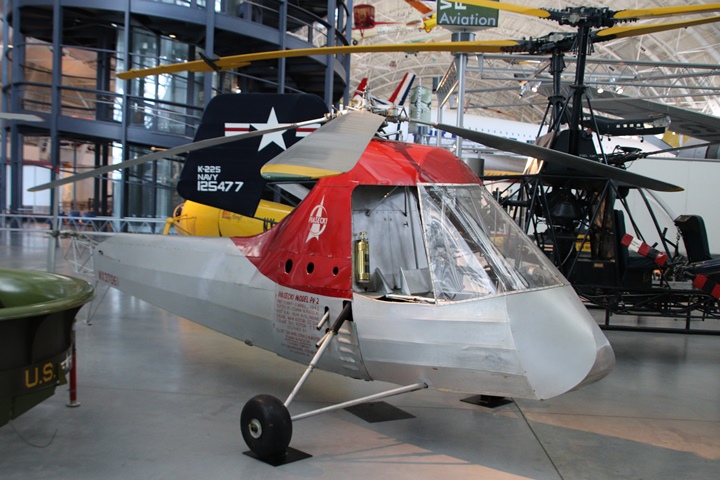
The Piasecki Model PV-2 is the second
successful helicopter to be flown in the United States. The Model
PV-2 was a collaborative effort of several persons led by Frank N
Piasecki. The PV-2 has a single main rotor and an anti-torque
rotor at the end of the tail boom. This is similar to the design
features of helicopters built by most companies since World War Two.
This helicopter is on display at the Udvar F. Hazy Center of the
National Air and Space Museum in Chantilly, VA. Author's photo.
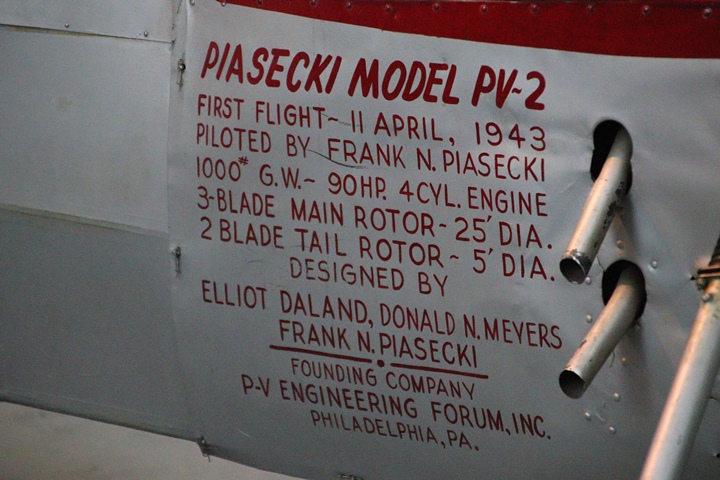
The Piasecki Model PV-2 was first flown on
April 11, 1943. The P-V Engineering Forum actually began as more
of a club than a company. In 1940, while Frank Piasecki was
working as an aerodynamicist at the Edward Budd Manufacturing Company of
Philadelphia, Mr. Piasecki gathered several of his college
engineering friends together to work on special aviation related
projects. The group met on weekends and evenings to look at what
products it might develop as a commercial aviation venture. For
Frank Piasecki, there was only one venture to pursue, and that was a
vertical lift aircraft, or helicopter. That became the P-V
Engineering Forum's project.
There are two other names on the PV-2.
Elliot Daland was the chief designer as Platt-LePage where Mr. Piasecki
worked at a junior engineer in his first job after graduating from
college. Don Meyers was a mechanical engineer in the group.
Both were well known in the Philadelphia aviation
industry as they had worked previously at the Pitcairn, Kellett, and
Wilford Companies, all of which were associated with the
design and manufacture of auto-gyro aircraft. After World War One, Mr. Daland was a founder in the Huff-Daland Dusters Company that
produced the first crop duster aircraft in the United States.
Others not named on the PV-2 were Harold Venzie, Walt
Swartz, Frank Kozloski, Ken Meenen, and Frank Mamrol. The informal
P-V Engineering Forum became more formalized and a became small company when
Frank Mamrol was hired as the first employee and then stayed with the
resulting Piasecki Helicopter Company for the rest of his life.
Frank N. Piasecki was the driving force behind
the P-V Engineering Forum and was one of the instrumental persons
driving the development and use of helicopters that
flowered after the end of World War Two. His tandem rotor
helicopter design is still used by the United States Army's CH-47
helicopter.
Frank N. Piasecki was born in Philadelphia, PA
on October 24, 1919, to Nikodern and Emilia Piasecki. Both had
immigrated before World War One to the United States from what is
currently the Ukraine in eastern Europe. When he was seven years
old, his father treated him to a ride on a barnstorming aircraft.
This ride in the open cockpit aircraft initiated his desire to become
involved with aviation and inspired all of the helicopters he developed
in later life. In high school, he was president of the school's
aero club. While he was growing up, the Philadelphia area was the
center of auto-gyro development in the United States which eventually
led to the development of the PV-2 and many other Piasecki helicopters.
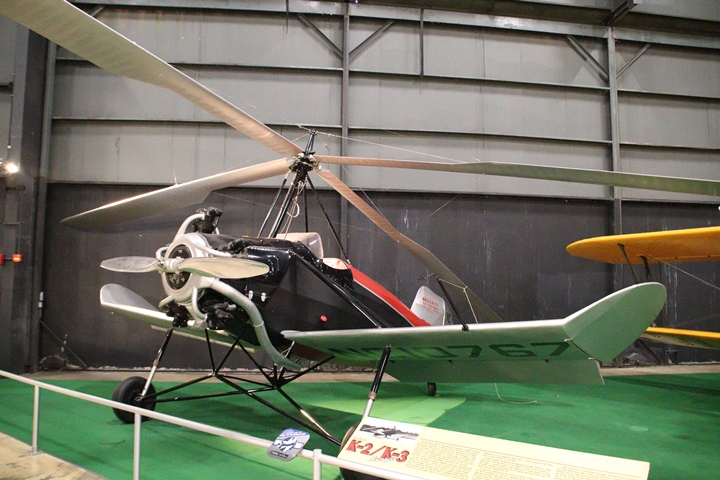
Being in Philadelphia put Frank N. Piasecki at the right place at the
right time. As a seventeen year old high school student, he was
able to fly on a Kellett K-1 which was piloted by Lou Leavitt. Mr.
Leavitt was the first person in the United States to be issued a rotary
wing pilot's license. This Kellett K-2 is very similar to the K-1
in which Frank Piasecki received a ride. This aircraft is
on display at the National Museum of the United States Air Force.
Author's photo.
After graduating from high school in 1936, he
went to work at the Kellett Aircraft Corporation. Because he was
not a college graduate, his work was mundane and not of much interest to
him. But with all jobs, he learned some skill sets that assisted him
later in life. He left Kellett and then went to work for the Aero
Service Corporation where he learned about aerial photography and
mapping. Frank N. Piasecki was encouraged to attend college by the
president of Aero Service Corporation. Mr.
Piasecki enrolled in engineering at the University of
Pennsylvania. After completing three years there, he transferred
to the Guggenheim School of Aeronautics at New York University and
graduated as an aeronautical engineer.
Mr. Piasecki's next job was as a junior
engineer at the Platt-LePage Aircraft Company in Eddystone, PA.
After working there, he moved on to Edward Budd Manufacturing Company in
Philadelphia, PA., where he worked on the company's all stainless steel
cargo aircraft.
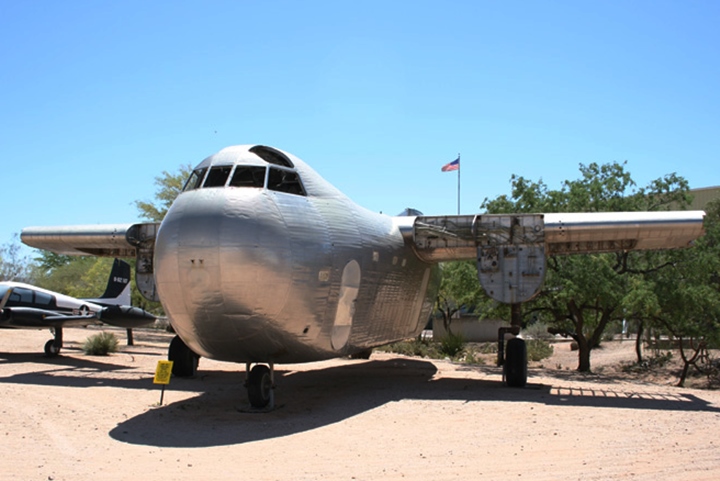
Working on the Budd RB-1 Conestoga twin
engine transport was Mr. Piasecki's day job while he and his friends
worked on the PV-1 in the evenings and weekends. This fuselage
with wing center section is on display at the Pima Air Museum in Tucson,
AZ. Author's photo.
Previous to World War Two, the U.S. Navy had
declared it was not interested in rotary wing aircraft. It saw no
use in them due to the small payloads. Also, at the time, the Navy
was utilizing all of its funding to rebuild its fixed wing fleet with
modern aircraft. However, by the middle of World War Two, public
and congressional pressure was being applied to the Navy to take on a
helicopter program. This was influenced by the U.S. Army's use of
the Sikorsky RH-4 for rescue missions in Burma and the Philippines.
The P-V Engineering Forum was in the right place at the right time with
a workable helicopter. Because Sikorsky was busy with Army
contract, it could not do any work for the Navy. Therefore, the
Navy turned to the P-V Engineering Forum and issued it contract number
OA-2796 in February 1944.
Table 1 - P-V Engineering Forum's
Major World War Two Contracts
The information below
comes from the "Alphabetical Listing of Major War Supply
Contracts, June 1940 through September 1945." This was
published by the Civilian Production Administration, Industrial
Statistics Division. |
|
Product - Customer |
Contract Number |
Contract Amount |
Contract Awarded
Date |
Completion
Date |
| Airplanes XHRP1 -
Navy |
OA-2796 |
$1,014,000 |
2-1944 |
6-1945 |
| Total
|
|
$1,014,000 |
|
|
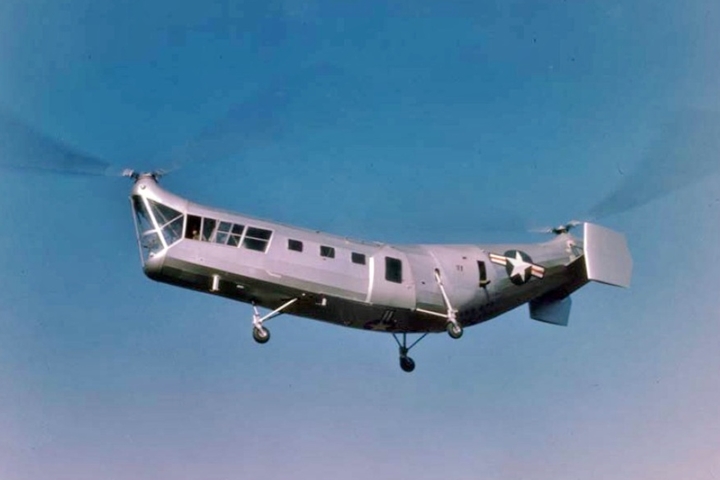
The P-V Engineering Forum produced one
prototype in 1945 under the U.S. Navy's contract OA-2796. This was
the world's first tandem rotor helicopter, which was designated the PV-3 by the company and the XHRP-1 by the
U.S. Navy. The XHRP-1 flew its first test flight in March 1945, and
entered service in 1947 with the U.S. Navy, USMC, and U.S. Coast Guard.
A total of 20 HPR-1s were built. The example shown here is a Coast
Guard aircraft.
In 1946 the P-V Forum became the Piasecki
Helicopter Company. In 1955, Frank Piasecki left the Piasecki
Helicopter Company and formed the Piasecki Aircraft Company.
In 1956, the Piasecki Helicopter Company was renamed the Vertol
Corporation Corporation (Vertol being an acronym for VERtical
Take-Off and Landing). It was at this point that the Piasecki
name was no longer associated with the helicopters Frank Piasecki
invented. Boeing acquired Vertol in 1960 as its Helicopter
Division in Ripley Park, PA.
In 1986, Piasecki was further honored when
President Reagan awarded him the National Medal of Technology. In 2002,
he was inducted into the National Aviation Hall of Fame, located at the
National Museum of the U.S. Air Force in Riverside, Ohio. Until
his death on February 11, 2008, Frank Piasecki was active and still
being granted patents. He is one of the unsung great American
aviation innovators.
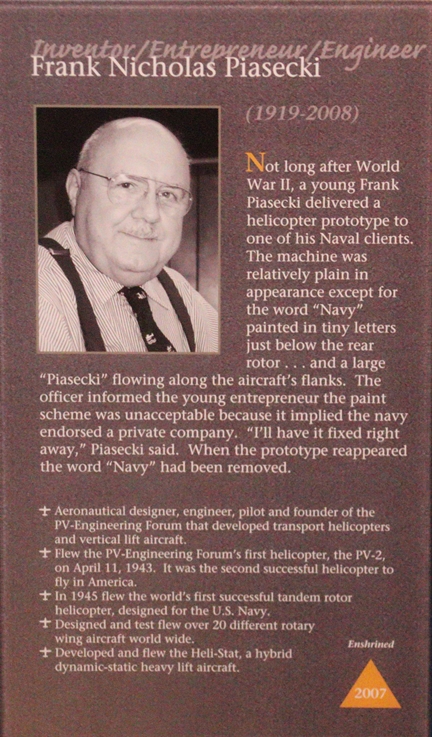
This plaque is on display at the National
Aviation Hall of Fame, located at the National Museum of the U.S. Air
Force. The National Hall of Fame has recognized the significance
of Frank Piasecki's contributions to the advancement of aviation
technology in the United States. Author's photo.
Frank Piasecki-designed or inspired
Helicopters:
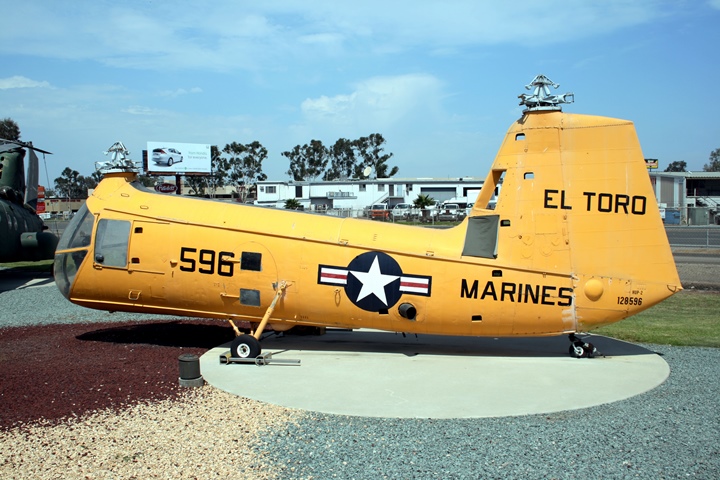
The Hup series of Piasecki helicopters
served with the U.S. Marine Corps, the U.S. Navy, and the U.S. Army.
This HUP-2 Retriever was photographed at the Flying Leathernecks Museum at MCAS
Miramar,
CA in 2009. The museum is currently in the process of moving to a
new location. Author's photo.
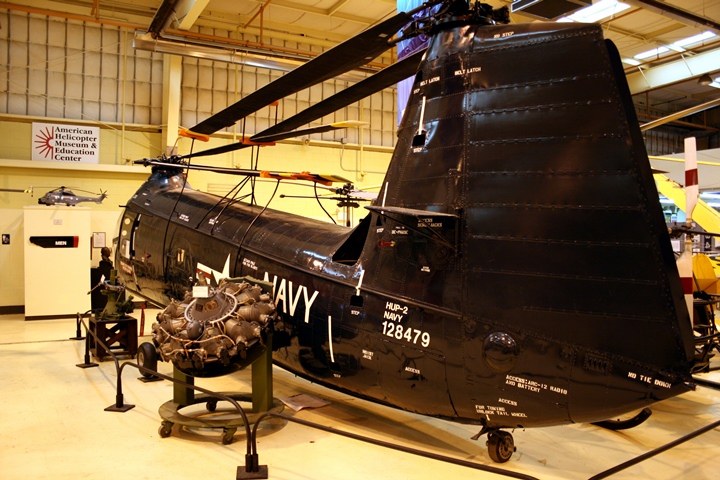
This Navy Piasecki HUP-2 is on display at
the American Helicopter Museum in West Chester, PA. Author's
photo.
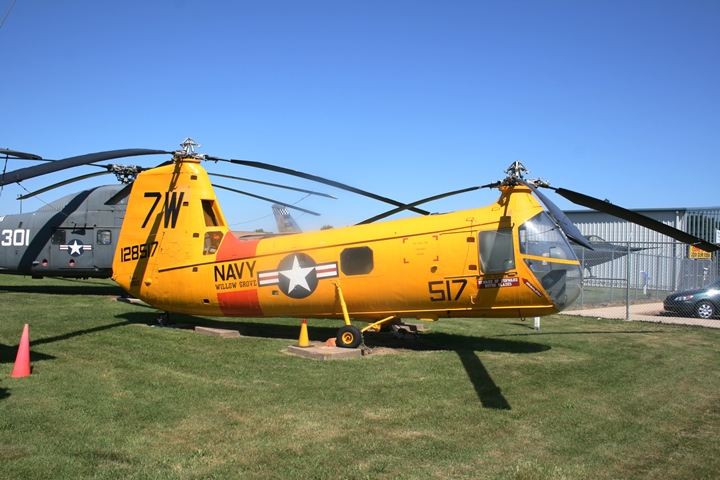
Not far away at the Wings of Freedom Museum
in Horsham, PA is this HUP-2. Author's photo.
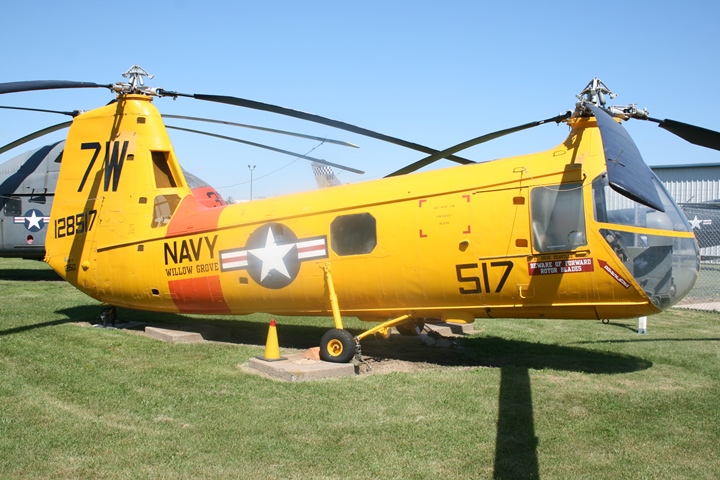
Production of the HUP-2 ended in 1954 after 366
were built. The HUP-2 was in service between 1949 and 1964.
Author's photo.
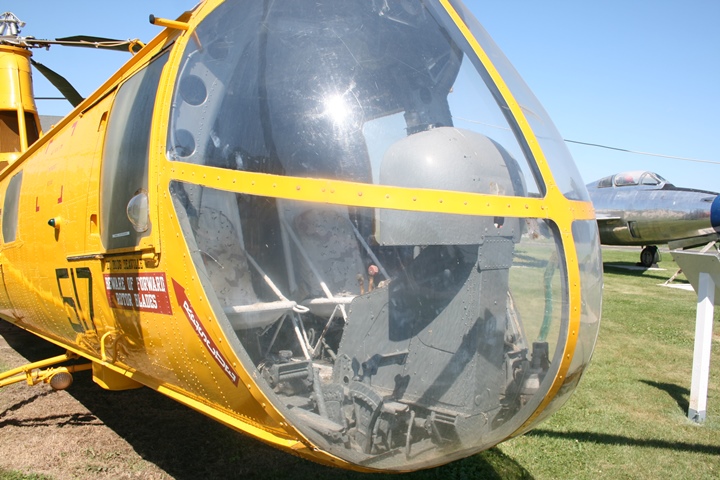
Author's photo.
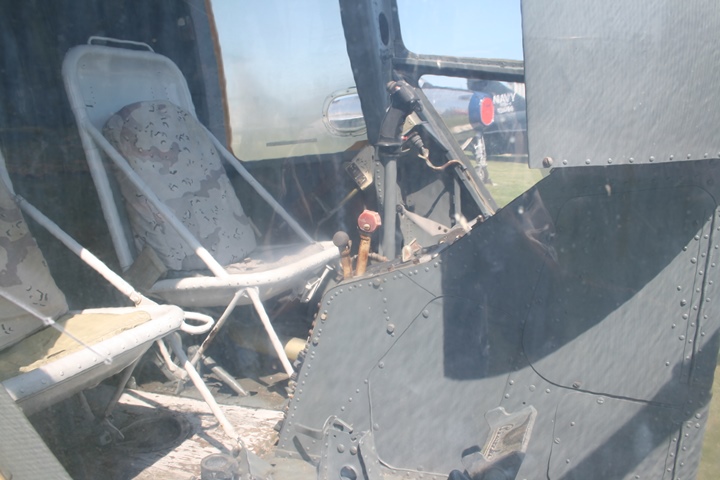
Author's photo.
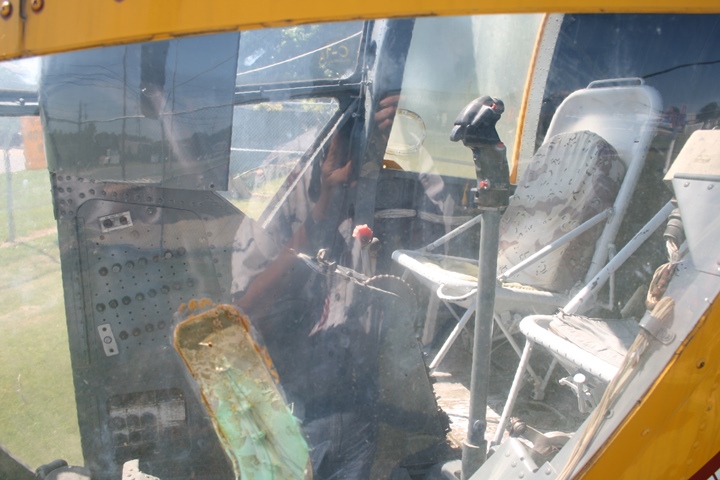
Author's photo.
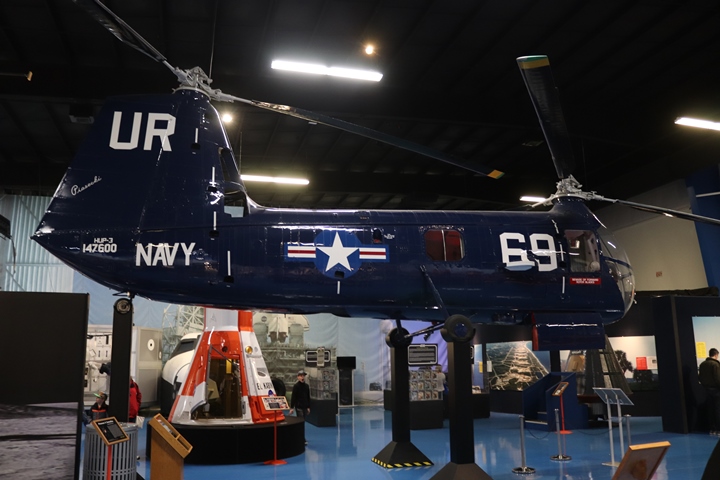
This HUP-3 is on display at the Air Zoo Air
and Space Museum in Portage, MI. Author's photo.
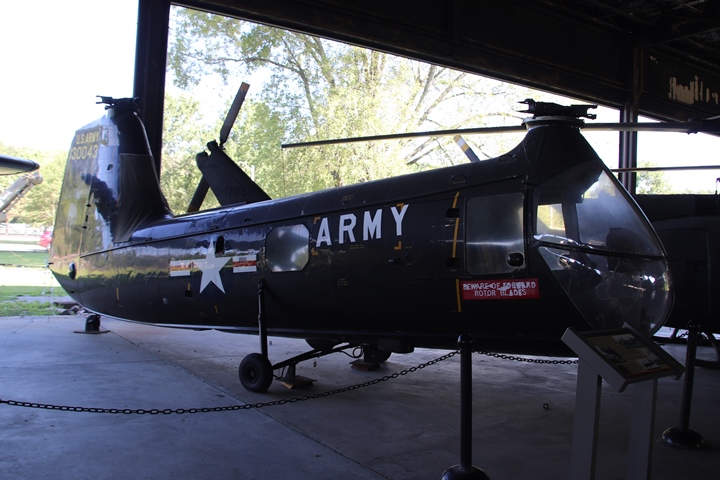
The U.S. Army operated the HUP series as the
H-21 Mule. The H-21 replaced U.S. Army Sikorsky H-19s in the Korean
Conflict. The US. Army operated 63 H-21s until 1955 when it began
transferring them to the U.S. Navy. This example is on display at
the U.S. Army Transportation Museum at Fort Eustis, VA. Author's
photo.
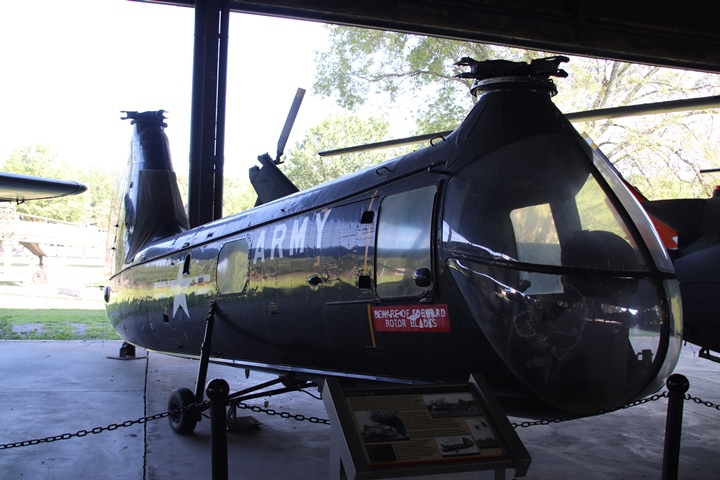
Author's photo.
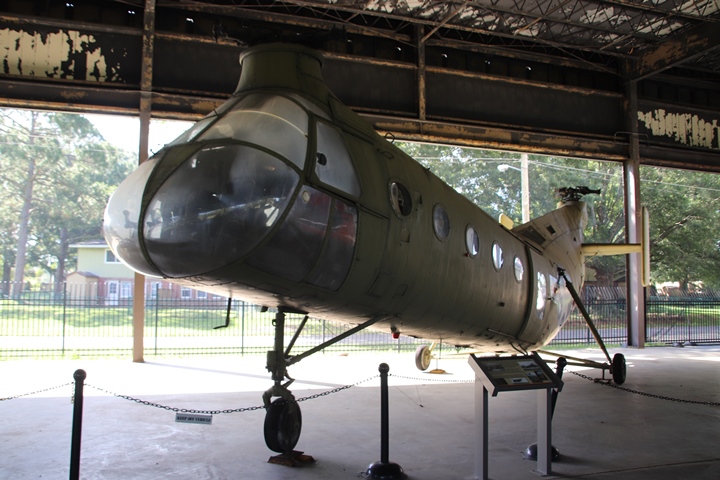
This Piasecki H-21C is also on display at
the U.S. Army Transportation Museum. The U.S. Army purchased 334 H-21Cs and another 16 Ch-21Bs
were transferred to it from the U.S. Air Force.
This particular aircraft is a veteran of U.S. Army in Vietnam and served
with the 57th Transport Company. It was one of the first
helicopters to serve
in the Vietnam War. Army HC-21s served in Vietnam from 1961-1963,
and it was this type of helicopter that was important in the development of the
Army's air mobile concept. This particular
aircraft served with the Army until 1967 when it became part of the
museum's collection. Author's photo.
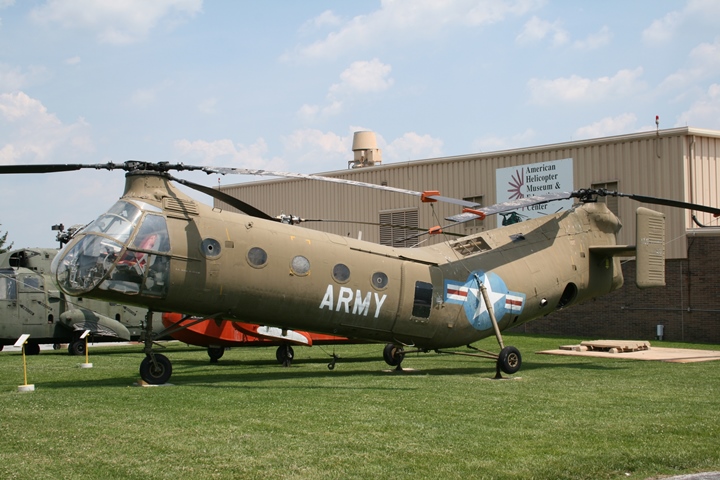
Another Army
HC-21C is on outside display at the American Helicopter Museum.
Author's photo.
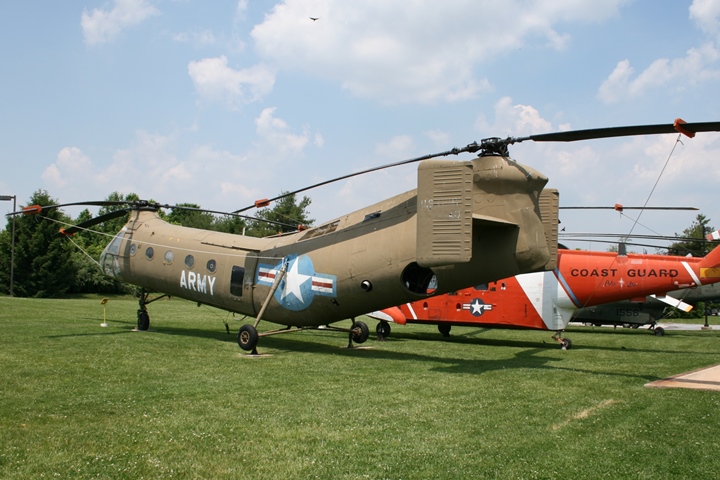
Author's photo.
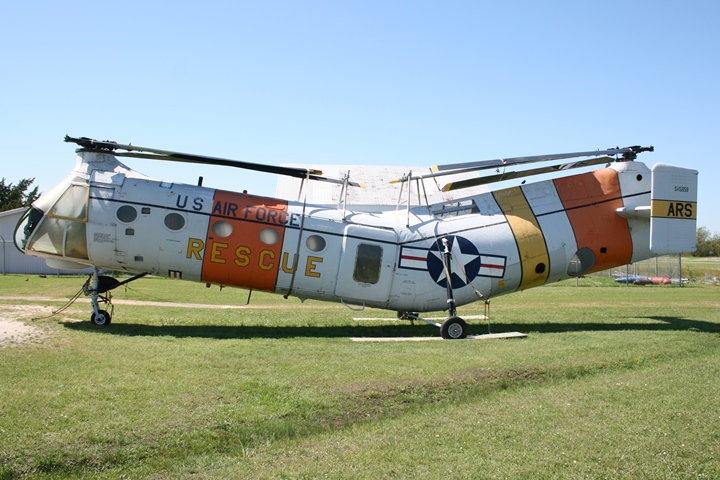
This CH-21B is on display at the USS Alabama
in Mobile, AL. The CH-21 was originally developed for use by the
U.S. Air Force in arctic rescues. Author's photo.
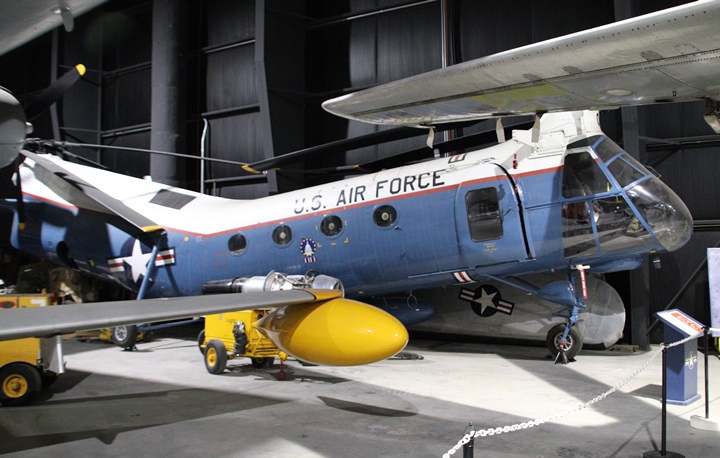
This former U.S. Air Force CH-21B, on display
at the Museum of Aviation at Warner Robins AFB, was assigned to President
Kennedy. Author's photo.
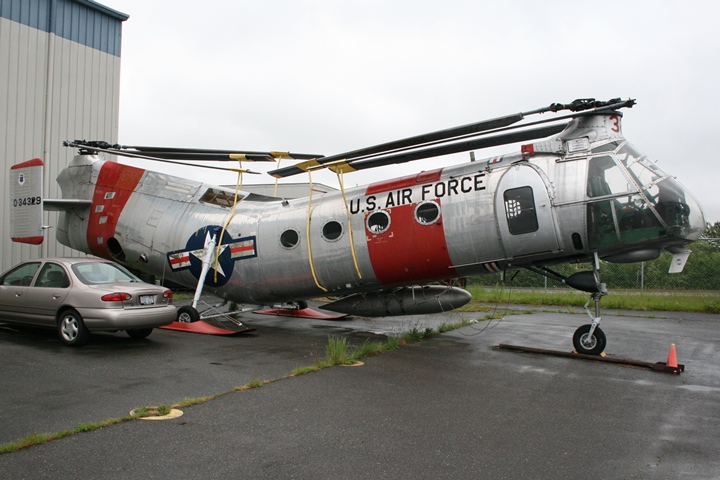
This CH-21B is part of the collection of the
Museum of Flight in Seattle, WA. It was photographed by the author
at the museum's restoration center at Paine Field in Everett, WA.
Author's photo.
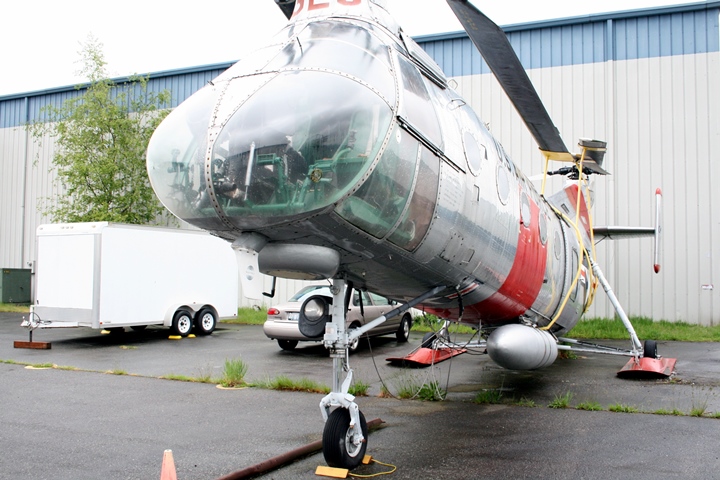
Author's photo.
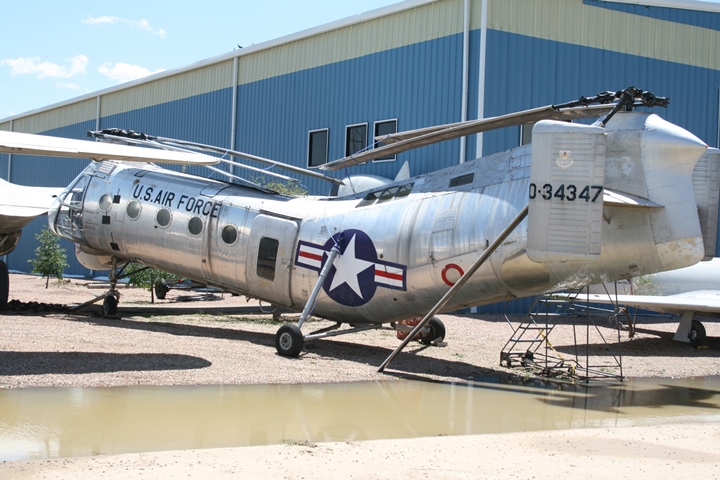
This U.S. Air Force CH-21B is one of the
many displays at the Pueblo Weisbrod Aircraft Museum in Pueblo, CO.
Author's photo.
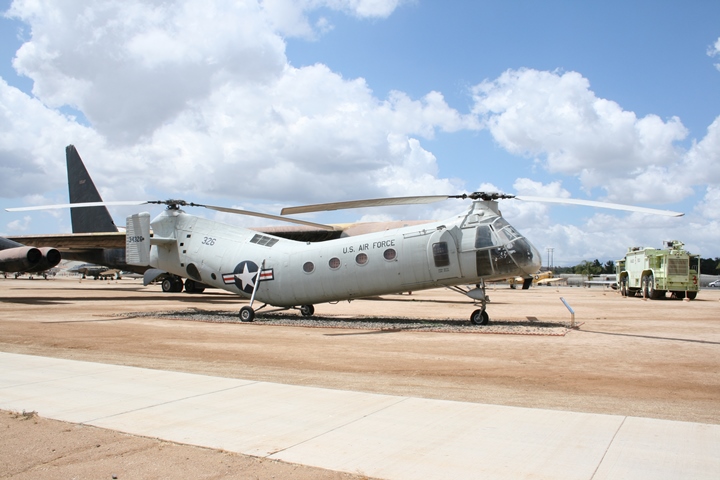
This CH-21B is part of the large outside
display of aircraft at the
March Field Air Museum at March ARB, Riverside, CA. Author's
photo.
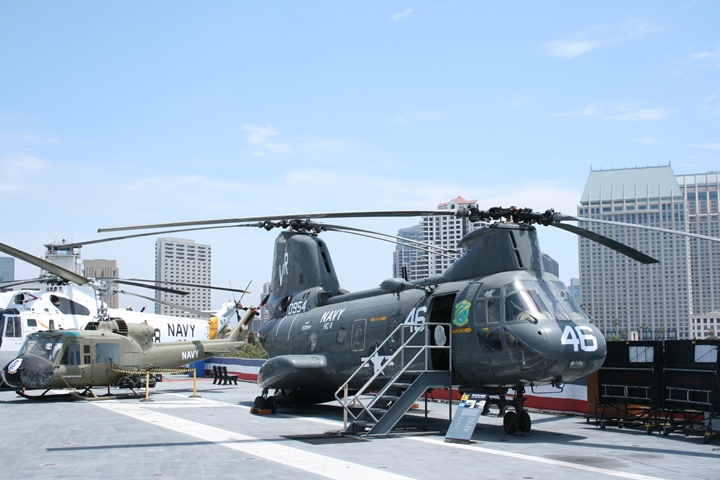
After Frank Piasecki left the Piasecki
Helicopter Company in 1955, the company was renamed Vertol Corporation.
This Vertol CH-46 Sea Knight is on display at the USS Midway in San
Diego, CA. The U.S. Navy operated the CH-46 from 1964 until 2004.
The USMC operated the CH-46 until 2015. Author's photo.
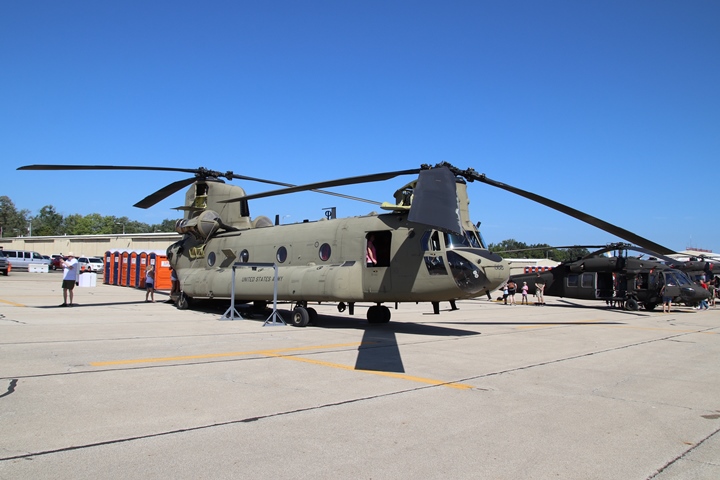
Frank Piasecki's legacy lives on with the
U.S. Army's CH-47 Chinook tandem rotor helicopter. The name of the
manufacturer of this aircraft may be Boeing, but the tandem rotor design
is a direct lineage to Frank Piasecki. This can be seen from two
of his many patents shown below. This one is operated by the
Illinois Army National Guard. Author's photo.
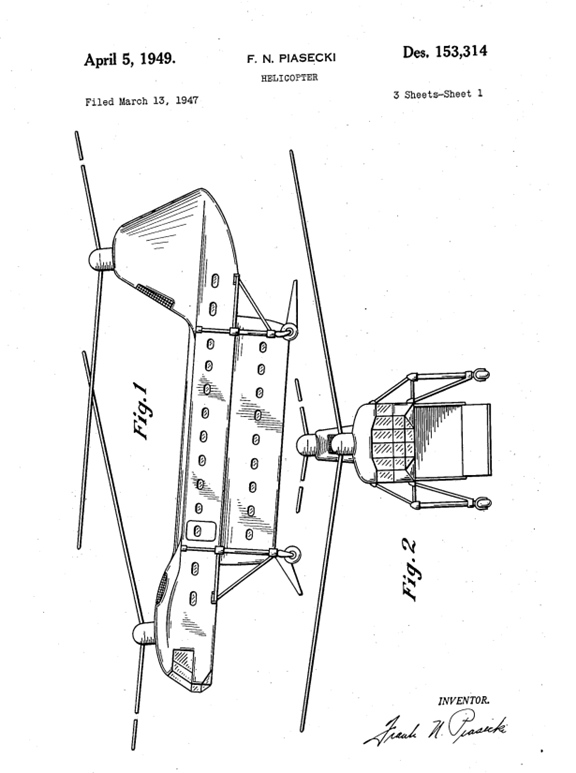
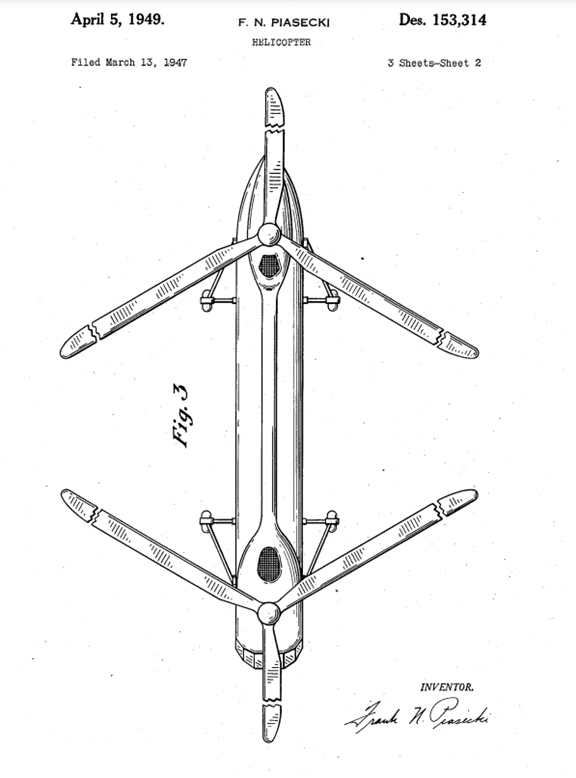
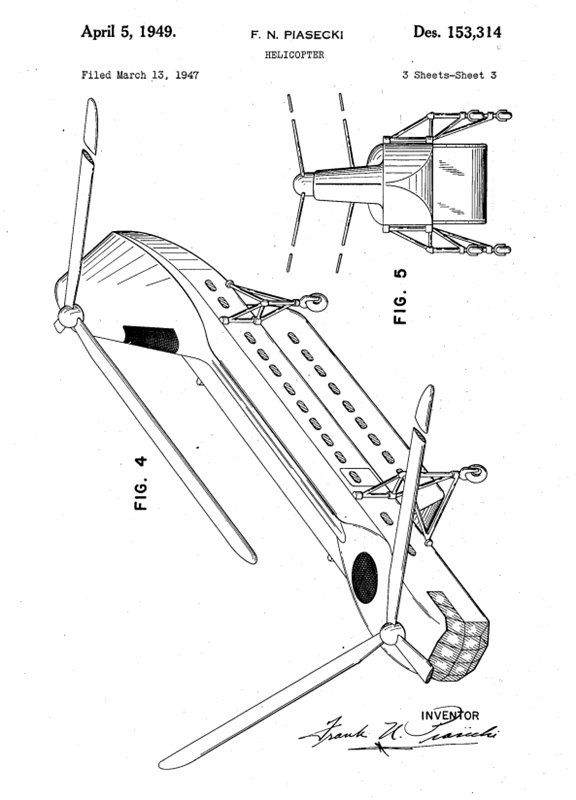
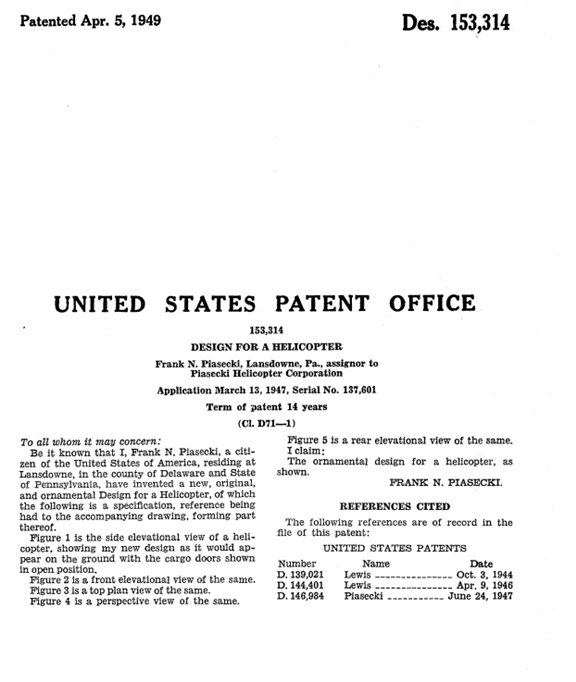
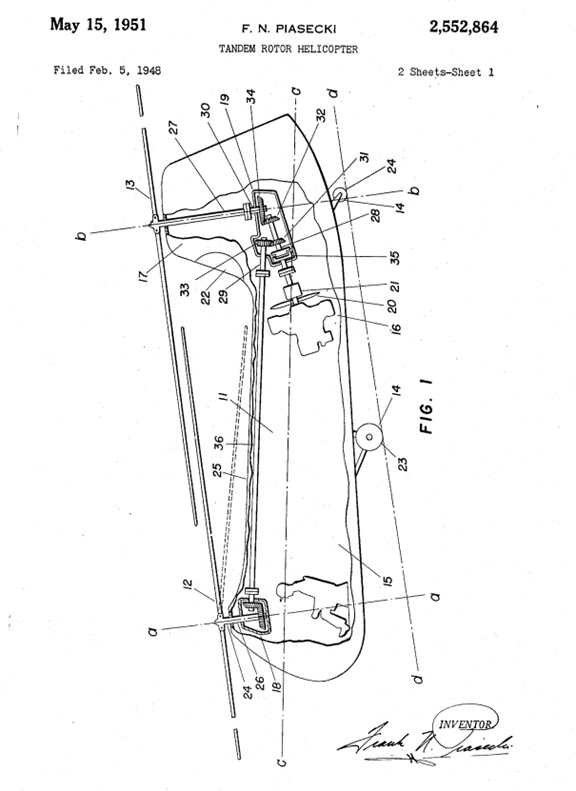
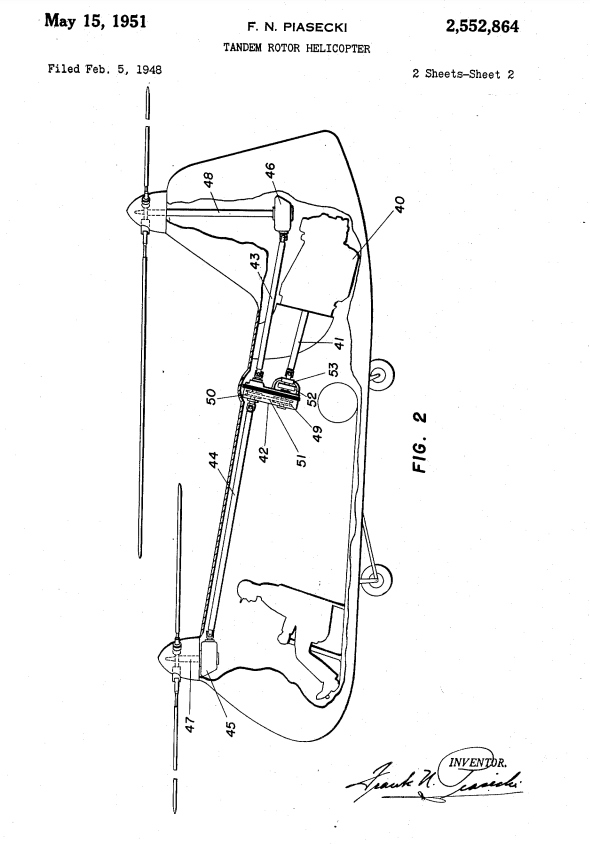
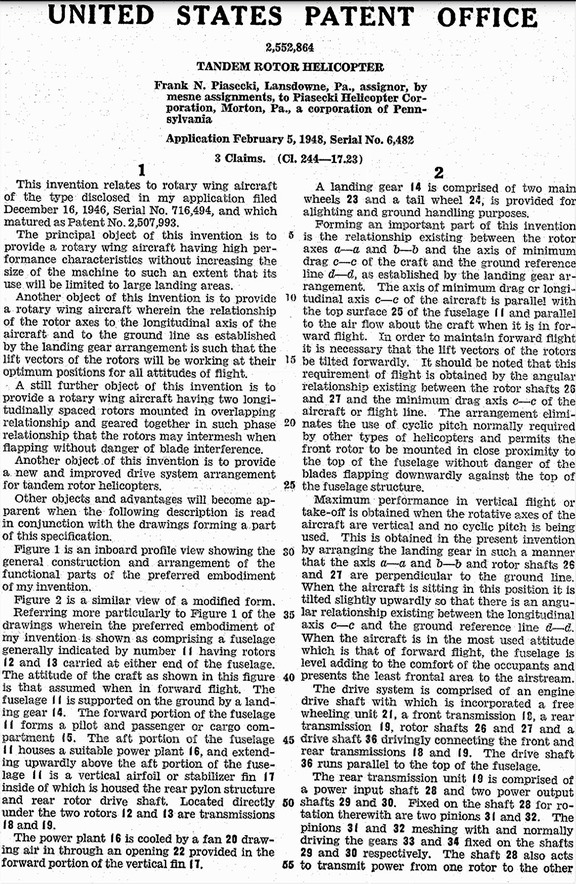
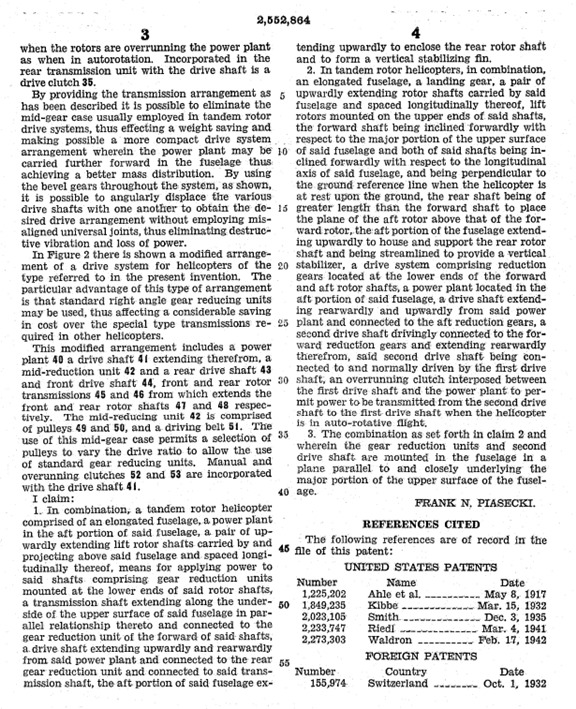
|


































